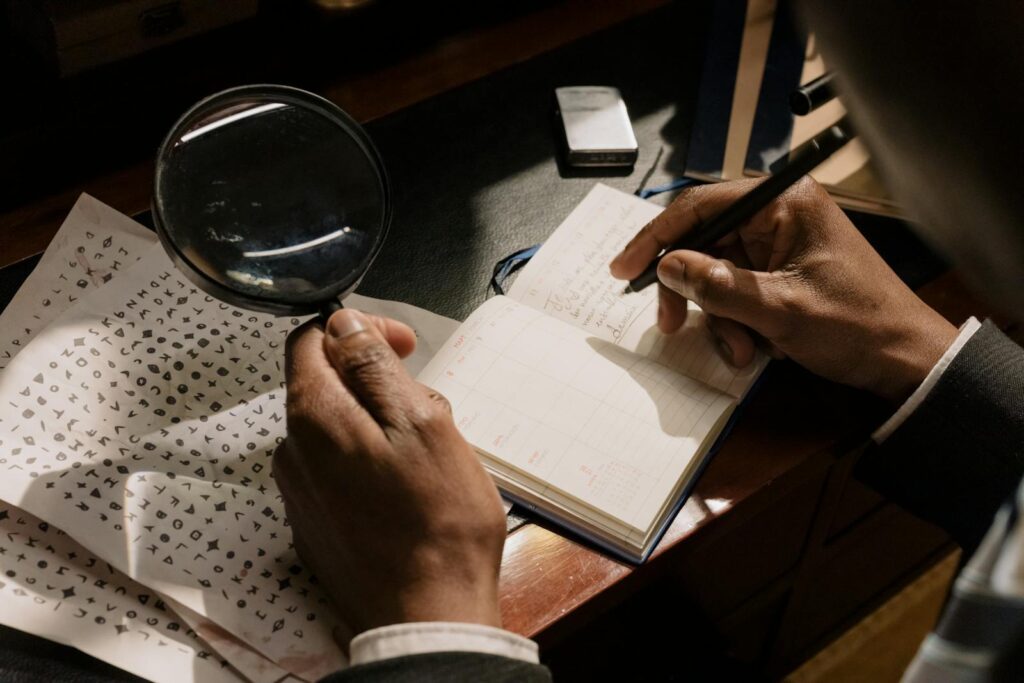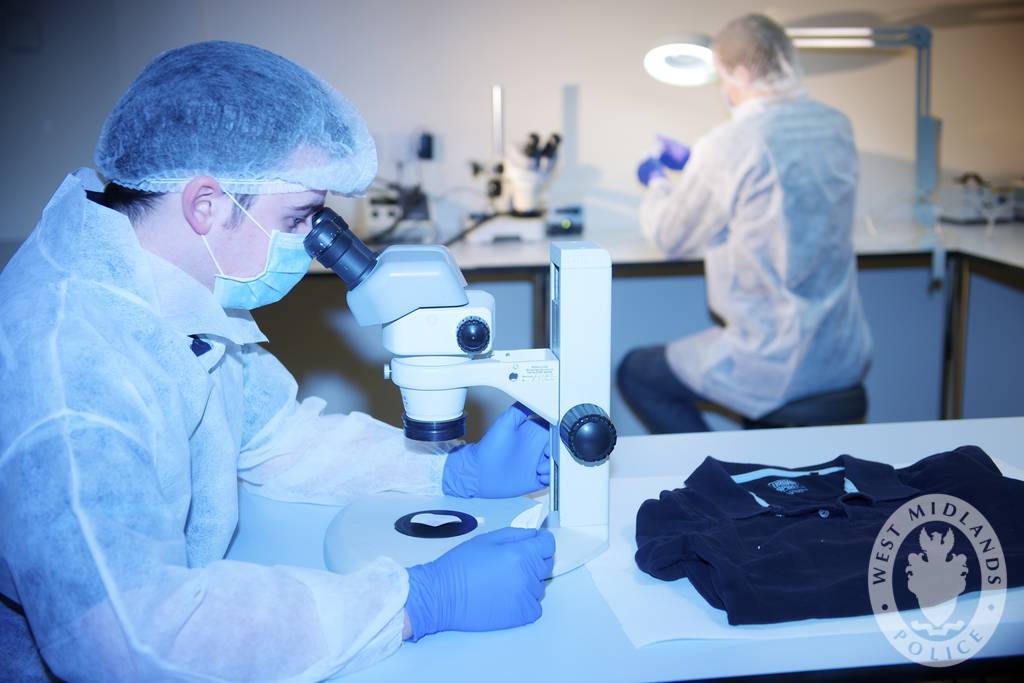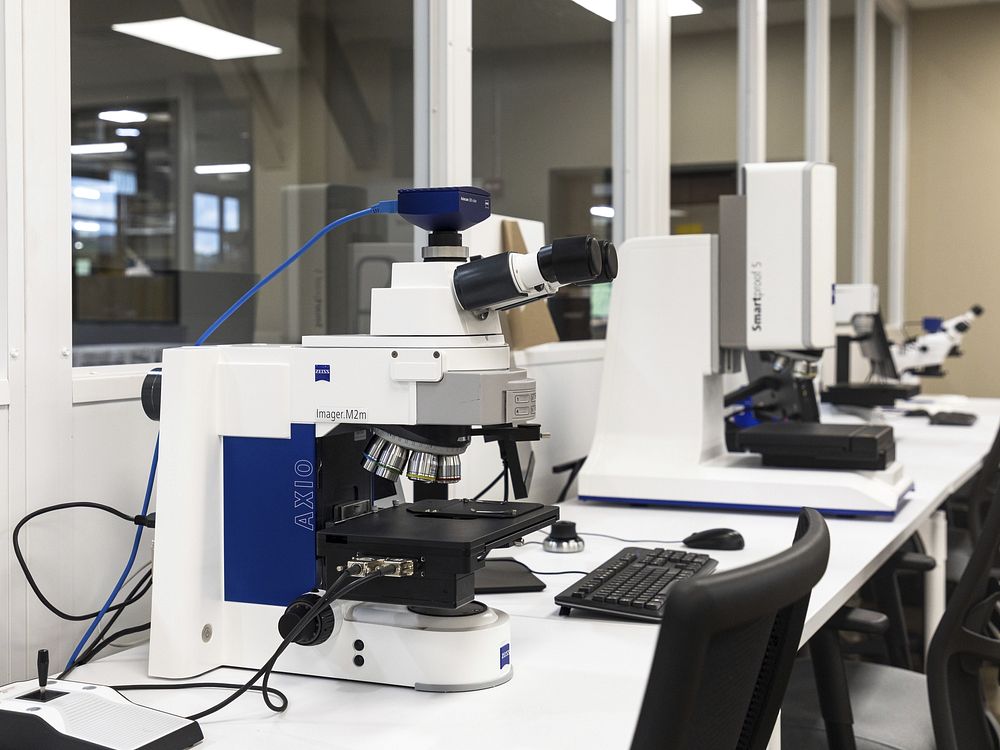Now Reading: In Vitro Validation of Vaginal Sampling in Rape Victims
-
01
In Vitro Validation of Vaginal Sampling in Rape Victims
In Vitro Validation of Vaginal Sampling in Rape Victims
News regarding incidents of sexual assaults and violent sex-crimes committed against women is not a new topic for discussion. However, ever since the outbreak of the Covid-19 pandemic began during the early months of 2020, it has confined men and women to the four walls of their house. This has shown an alarming rise in the number of cases related to domestic & sexual violence committed against women, globally.
The terms “Sexual Assault” and “Rape” are often interchanged. However, we must understand the difference between the two terms while dealing with cases of sexual offences. This is especially important while deciding the severity of the punishment based on the seriousness of the crime.
“Sexual Assault” is an umbrella term used to refer to ‘any form of sexual contact or behaviour that occurs without the explicit consent of the victim.’(Sexual Assault | RAINN, n.d.) This may include acts of fondling or unwanted sexual touching, molestation, incest, attempted rape, forced sexual intercourse (Rape), and forcible sodomy.
The term “Rape” is used for a more serious form of sexual assault. It is legally defined as any form of unwanted sexual penetration. “The penetration, no matter how slight, of the vagina or anus with any body part or object, or oral penetration by a sex organ of another person, without the consent of the victim.” (“What Is the Difference Between Rape and Sexual Assault?” 2019)
Following the infamous case of brutal rape and murder of a 23-year-old woman, which took place in Delhi, on December 16th 2012, the Indian media named the victim as “Nirbhaya” to protect her identity. (Nirbhaya Act, 2018) This incident caused national and international condemnation regarding increasing crime rates against women and the inadequate legal protection offered to them by the Indian Legislation. This paved way for the amendment of the Rape laws in the country, to deter the violence committed against women.
The Criminal Law (Amendment) Act is a relatively new & a more stringent Anti-Rape Law which has redefined Rape and aimed at imposing more severe punishment to sex-offenders, which includes imposing the Capital Punishment on the repeat rape offenders. (How Nirbhaya Case Changed Rape Laws in India | India News – Times of India, n.d.)
Under this Act, amendments were made to the existing criminal laws that include the Indian Penal Code (IPC), the Code of Criminal Procedure (CrPC) and the Indian Evidence Act (IEA). Some of the most important changes that were made include the following:
- The definition of Rape has now been broadened to include Oral Sex, as well as the insertion of an object or any other body part into the woman’s vagina, urethra or anus. (Nirbhaya Act – Manifest IAS, n.d.)
- It has defined “Consent” as ‘an unequivocal agreement to engage in a particular sexual act’, further clarifying that the ‘absence of resistance does not imply consent’.
- New sections have been added in the IPC regarding offences such as Acid Attack, Sexual Harassment, Voyeurism, and Stalking.
Contact between two or more subjects involved in a criminal act is a natural consequence of the crime that takes place. This is where the most important principle of Forensic Science, popularly known as the “Locard’s Principle of Exchange”, comes into the picture. This principle states that “Whenever two entities come in contact, mutual exchange of traces take place” (Sharma, 2014) Therefore, the same principle applies to cases of sexual assault & rape. When an assailant sexually assaults a victim, a mutual exchange of matter takes place between the two individuals. If these traces of evidence are identified, it can help in linking the victim and the assailant to that particular criminal act.
Important biological evidence to be collected from the Victim of Sexual Assault:
When an investigator deals with the cases of sexual assault, the first task is aimed at providing evidence as to whether sex occurred. This is done by the selection of appropriate forensic testing and collection of samples within an appropriate time period.’(Nittis, 2013) This is followed by the collection of evidence that may help in the identification of the alleged accused.
In addition to sexual assault injuries on the victim’s body, looking for the presence of biological evidence on the body of the victim or suspect is of prime importance. This is because biological evidence such as Semen, Vaginal Secretions, Blood, Menstrual Blood, Saliva, etc., are valuable sources of DNA evidence, which play a significant role in establishing the individual’s identity. Furthermore, investigators also look for trace evidence that could have been exchanged during the attack. This may include epithelial cells found under the victim’s fingernails that may be exchanged from the assaulter to the victim, as a result of defending herself during the attack, cloth fibres, soil particles, traces of lubricants from the condom, if used by the assaulter; pollen or plant spores, and other general debris materials that could be recovered from the victim’s genital region. The samples are collected from several parts of the victim’s body and that of the accused may include the following: (Evidence-Based-Forensic-Sampling-Standards.Pdf, n.d.)
- Oral swabs collected from the Victim and the Suspect
- Female genital sampling: Swabs from the vulva (which comprises of labia majora, labia minora & the clitoris) and the vaginal canal.
- Penile samples collected from the accused: Swabs from the penile shaft & penile glans.
- Anal & Rectal swabs collected from the Victim.
- Swabs from the skin of the victim & and the accused, for collection of epithelial cells, semen, blood stains, saliva, and other biological fluids.
- Fingernail samples collected from the victim & accused.
However, since the focus of this article being the validation of vaginal sampling method, we are going to further discuss the Vaginal Sampling Methods in detail.
Vaginal Sampling methods used for Sample Collection:
In cases of Sexual Assaults & Rape, the medical examination of the victim is carried out by a medical practitioner only based on the requisition of a police officer or the Magistrate and the written consent given by the victim for undergoing the examination. (Reddy & Murty, 2014)
While the medical professional examines the genital region of the victim for any damages caused to the hymen, or any other vaginal injuries as a result of the sexual assault, they may also record and collect any trace evidence, if found. Vaginal sampling is routinely carried out to collect trace materials inside the vagina (e.g., body fluids, traces of objects, condom lubricants) that can help in proving vaginal penetration in sex-crime cases.
Sexual Assault Forensic Evidence (SAFE) kits, also known as “Rape Kits”, are used in the collection and packaging of evidence from the body of a Rape Victim. It contains all the materials and equipment necessary for the evidence collection carried out during the medical examination of the victim. Even though the contents of the kit may vary according to the state or jurisdiction, it generally contains documentation forms, a comb, a sheet of instructions, bags & envelopes for evidence collection, blood sampling equipment, and swabs. (What Is a Sexual Assault Forensic Exam? | RAINN, n.d.)
Based on the guidelines prescribed for the Vaginal Trace Sampling, it is recommended to use a Speculum and Swabs, or Swabs only for the sample collection. (Loeve et al., 2013)
A speculum is a medical tool that is used to widen the opening of the vagina to get a better visual field for the examination of the vagina and cervix. (Definition of Speculum, Vaginal, n.d.). The use of the speculum during the vaginal sampling ensures that the cotton-tipped swab can be inserted into the vaginal canal to a specific depth to properly swab the surfaces for collection of the trace evidence, without much hindrance from the external vaginal surfaces. (Vaginal Speculum, 2018)
However, in many cases, the vaginal swabs are carried out with the cotton-tipped swabs (resembles an earbud), which is first moistened with distilled water and inserted directly into the vaginal canal through the hymen, while keeping the labia spread, with the examiner’s fingers.
Reliability of Vaginal Sampling Methods:
Concerned with the issues regarding the reliability of the existing vaginal sampling method & the possibility of mistakes that may occur while sampling the Vaginal evidence, that may potentially affect the results of the examination of such vaginal samples, a group of scientists (Loeve et al., 2013) from Delft University of Technology, Netherlands, decided to conduct a ‘study to investigate the reliability of vaginal trace sampling methods (with/ without speculum) on mock-up vaginas.’ (Loeve et al., 2013) (Newton, 2014)
The study aimed to assess the risks of obtaining false-positive findings from in-vitro traces collected from the inside of the vagina, which may occur as a result of the accidental dislocation of trace evidence from the original site, outside of the vaginal surface, to the insides of the vagina. This may be caused by the use of sampling methods such as speculum and swabs, which are the conventional techniques used to collect evidence from the vagina in cases of female sexual assault that involves vaginal penetration.
The basis for the concern regarding the accidental transfer of the trace evidence arises from Locard’s Principle of Exchange. Often, the tool such as a speculum, which is used to carry out the vaginal sampling comes in contact with the surface of the labia minora. This surface could carry some trace materials over it, which would have been exchanged during the sexual assault. Now, when the same tool is being inserted into the vaginal opening, some of the trace evidence present on the surface of tool (picked up from the surface of the labia) may be unknowingly transferred into the vaginal canal, where it did not previously exist. Further, when the vaginal canal is swabbed for the trace evidence sampling, it may pick up these newly trace evidence (which originally did not belong there) and give a false-positive result that can potentially mislead the investigation.
In-Vitro Validation of the Vaginal Sampling Methods:
The term ‘In-Vitro’ refers to the studies or experiments that are performed outside of a living organism’s body. These experiments are usually carried out in a laboratory, on glass or petri-dish, under certain specific & controlled environmental conditions artificially created to mimic the conditions of the body.
In the previously mentioned study that was conducted to assess the risk of accidental trace dislocation, the scientists used adult sex toys that resembled a prosthetic vagina, made up of flexible, visco-elastic polymer. This provided a suitable in-vitro condition to experiment and assess the reliability of the Vaginal Trace Sampling method.
In addition to the usual speculum and swab method of vaginal sampling, the scientists included a simple “Sleeve” accessory in the experiment. This was used to help prevent any trace materials from being accidentally transferred from outside the external surface of the vagina (labia) into the vagina itself.
‘The sleeve accessory that was developed consisted of a rigid plastic ring with a thin, flexible but non-stretch foil tube, which was firmly attached at one end to the entire perimeter of the plastic ring. This accessory was designed to be used with a Seyffert vaginal speculum. (Loeve et al., 2013) The foil tube used here, behaves as a shield to the speculum blades, preventing it from coming in direct contact with any of the trace materials that may be present on the vulva & the vaginal entrance.
Therefore, the final experiment involved the testing of the following three vaginal sampling methods for trace evidence collection:
- The “speculum method”, in which the speculum is inserted before using the swab
- The “swab-only method”, in which the swab is blindly inserted into the vagina through the hymen.
- The “Sleeve method”, in which a speculum is inserted with the aid of a sleeve accessory before a swab is used. ( 1 Illustrations of the Sleeve Accessory Structure and Operation. a…, n.d.)
- Trace Material Used:
For this study, viscous starch cream (8.25 wt% starch boiled water) was used as the trace material. It was applied onto the labia minora of a vulva-vagina mock-up. During the experiment, if any of the trace material was accidentally transferred from its original site to the vagina itself, the traces of starch can be easily detected using iodine solution (0.05 wt%), which will be observed by the formation of a blue-black colour. (Loeve et al., 2013)
- Results and Conclusion of the In-vitro Sampling Methods:
Each of the three sampling methods was tested 30 times on 3 different vulva- vagina mock-up structures of varying sizes. The experimental results for all the 90 test runs indicated that the “Speculum Method” showed 100% trace dislocation. This suggested that a clean mock-up vagina was contaminated by the transfer of trace material into the vaginal canal from the labia and the surrounding genital region. Trace dislocation was also observed in the case of the “Swab-only method”, but was lesser than the “Speculum Method”, having shown the transfer of trace material up to 63-87% of the cases. However, the results of trace dislocation when using the “Sleeve Method”, showed significantly lower cases of transfer, coming up to only 2% of the cases.
Thus, the results of this study suggest that there is a considerable amount of risk of accidental dislocation of trace evidence associated with the use of the conventional Vaginal Sampling methods that involve using a Speculum and Swabs.
Therefore, based on this study it can be concluded that there is an urgent need to carry out further research related to clinical in-vivo studies, to determine whether the use of these conventional methods for vaginal sampling gives False-Positive results as shown in the study discussed above.
The relevance of the study when dealing with cases of sexual assault:
This study discussed ‘Accidental Trace Dislocation’. As mentioned earlier, trace evidence can also be potentially incriminating evidence if detected and analysed appropriately. When dealing with cases of rape, the presence of trace materials of objects in the vaginal region of the victim can help rule out whether or not a foreign object was used for penetration, and also determine the kind of object that was used to commit the crime. For example, traces of the iron particles found in the rape victim’s genital may indicate that some foreign object made up of iron was during the sexual assault. Further, if the traces were found in the victim’s vaginal canal, it can indicate that the object was used for the penetration.
This can behave as crucial evidence while determining the seriousness of the crime, to impose a punishment that fits the criminal act.
References:
- Definition of Speculum, vaginal. (n.d.). MedicineNet. Retrieved October 3, 2020, from https://www.medicinenet.com/script/main/art.asp?articlekey=12239
- Evidence-Based-Forensic-Sampling-Standards.pdf. (n.d.). Retrieved October 3, 2020, from https://www.rcpa.edu.au/getattachment/a83318be-18cf-42f9-9332-7856856131f1/Evidence-Based-Forensic-Sampling-Standards.aspx
- 1 Illustrations of the sleeve accessory structure and operation. A… (n.d.). ResearchGate. Retrieved October 3, 2020, from https://www.researchgate.net/figure/llustrations-of-the-sleeve-accessory-structure-and-operation-a-Front-left-and-lateral_fig7_236078214
- How Nirbhaya case changed rape laws in India | India News—Times of India. (n.d.). The Times of India. Retrieved October 11, 2020, from https://timesofindia.indiatimes.com/india/how-nirbhaya-case-changed-rape-laws-in-india/articleshow/72868366.cms
- Loeve, A. J., Bilo, R. A. C., Emirdag, E., Sharify, M., Jansen, F. W., & Dankelman, J. (2013). In vitro validation of vaginal sampling in rape victims: The problem of Locard’s principle. Forensic Science, Medicine, and Pathology, 9(2), 154–162. https://doi.org/10.1007/s12024-013-9426-6
- Newton, M. (2014). The sexual assault examination kit. In M. Dalton (Ed.), Forensic Gynaecology (pp. 24–47). Cambridge University Press. https://doi.org/10.1017/CBO9781107585812.006
- Nirbhaya Act. (2018, April 15). Thehansindia.Com. https://www.thehansindia.com/posts/index/Hans-Classroom/2018-04-15/Nirbhaya-Act/374241
- Nirbhaya Act—Manifest IAS. (n.d.). Retrieved October 10, 2020, from https://www.manifestias.com/2020/06/25/nirbhaya-act/
- Nittis, M. (2013). Evidence Collection in Cases of Sexual Assault. In R. G. Beran (Ed.), Legal and Forensic Medicine (pp. 1335–1358). Springer Berlin Heidelberg. https://doi.org/10.1007/978-3-642-32338-6_92
- Reddy, N. K. S., & Murty, O. P. (2014). The essentials of forensic medicine and toxicology.
- Sexual Assault | RAINN. (n.d.). Retrieved October 2, 2020, from https://www.rainn.org/articles/sexual-assault
- Sharma, B. R. (2014). Forensic Science in Criminal Investigation & Trials (5th ed.). New Delhi: University Law Publishing Co. Pvt. Ltd.
- Vaginal Speculum: What You Need to Know. (2018, October 19). Healthline. https://www.healthline.com/health/vaginal-speculum
- What Is a Sexual Assault Forensic Exam? | RAINN. (n.d.). Retrieved October 11, 2020, from https://www.rainn.org/articles/rape-kit
- What is the Difference Between Rape and Sexual Assault? (2019, March 8). The Embry Law Firm, LLC. https://embrylawfirm.com/difference-between-rape-and-sexual-assault/









